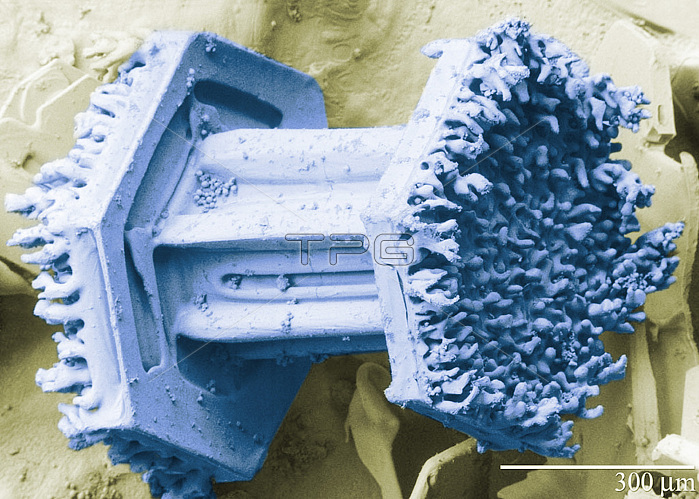
Under some atmospheric conditions, forming and descending snow crystals may encounter and pass through atmospheric supercooled cloud droplets. These droplets, which have a diameter of about 10 繕m, can exist in the unfrozen state down to temperatures near -40 C. Contact between the snow crystal and the supercooled droplets results in freezing of the liquid droplets onto the surface of the crystals. This process of crystal growth is know as accretion. Crystals that exhibit frozen droplets on their surfaces are referred to as rimed. When this process continues so that the shape of the original snow crystal is no longer identifiable, the resulting crystal is referred to as graupel. The frozen droplets on the surface of rimed crystals are hard to resolve and the topography of a graupel particle is not easy to record with a light microscope because of the limited resolution and depth of field in the instrument. However, observations of snow crystals with a low temperature LT-SEM clearly show cloud droplets measuring up to 50 繕m on the surface of the crystals. The rime has been observed on all four basic forms of snow crystals, including columns like the one pictured here. As the riming process continues, the mass of frozen, accumulated cloud droplets obscures the identity of the original snow crystal thereby giving rise to a graupel particle. Image was obtained using a Low Temperature Scanning Electron Microscope (LT-SEM).
| px | px | dpi | = | cm | x | cm | = | MB |
Details
Creative#:
TOP22234388
Source:
達志影像
Authorization Type:
RM
Release Information:
須由TPG 完整授權
Model Release:
N/A
Property Release:
No
Right to Privacy:
No
Same folder images:

 Loading
Loading